Top 10 Incredible Beautiful Temples in The World
 |
| Top 10 most beautiful temples in the world |
Since ancient times, human societies across the world have built beautiful religious monuments to honor their gods. These temples often boast incredible architectural features, elaborate designs and artistic details that are intended to bridge the connection between human and divine.
From precariously perched monasteries on Himalayan hillsides, to immense stone sculptures and gold-plated pagodas, many of these religious monuments have been attracting worshippers, pilgrims and visitors for hundreds, even thousands of years.
There’s no end to the diversity and splendor of this type of religious architecture. Step inside and marvel at the wonder of these top 10 most beautiful temples around the world.
The List of top 10 most beautiful temples in the world
10. Man Mo Temple in Hong Kong
9. Seiganto-ji in Nachikatsuura, Japan
8. The Temple of Hephaestus in Athens, Greece
7. Paro Taktsang in the Paro Valley, Bhutan
6. Wat Benchamabophit Dusitvanaram in Bangkok, Thailand
5. The Temples of Abu Simbel in Abu Simbel, Egypt
4. Shwedagon Pagoda in Yangon, Myanmar
3. The Temple of Heaven in Beijing, China
2. Wat Rong Khun in Chiang Rai, Thailand
1. Ranakpur Jain in Pali, India
What are the most beautiful temples in the world?
10. Man Mo Temple in Hong Kong
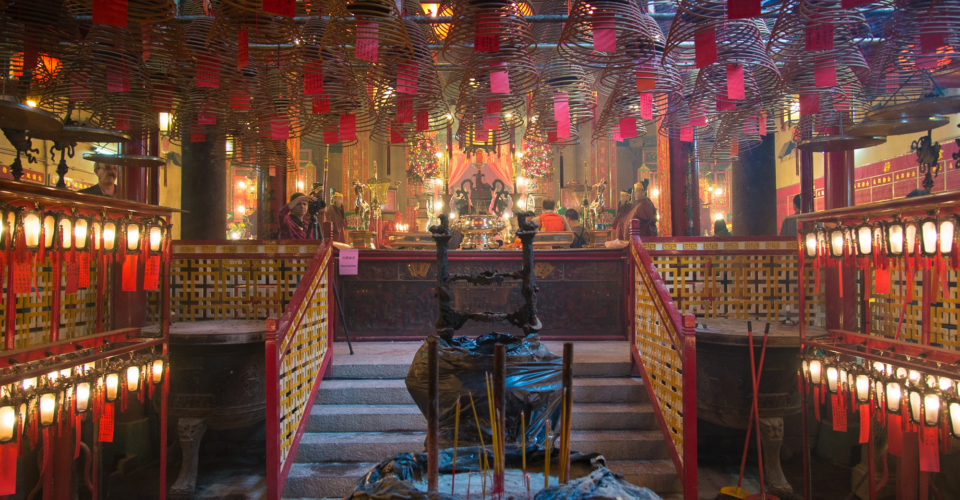 |
| Photo: The Loop HK |
One of Hong Kong’s oldest temples and a declared monument, atmospheric Man Mo Temple is dedicated to the gods of literature (‘Man’), holding a writing brush, and of war (‘Mo’), wielding a sword. Built in 1847 during the Qing dynasty by wealthy Chinese merchants, it was, besides a place of worship, a court of arbitration for local disputes when trust was thin between the Chinese and the colonialists.
Oaths taken at this Taoist temple (often accompanied by the ritual beheading of a rooster) were accepted by the colonial government.
Outside the main entrance are four gilt plaques on poles that used to be carried around at processions. Two describe the gods being worshipped inside, one requests silence and a show of respect within the temple’s grounds, and the last warns menstruating women to keep out of the main hall. Inside the temple are two 19th-century sedan chairs with elaborate carvings, that used to carry the two gods during festivals.
Lending the temple its beguiling and smoky air are rows of large earth-coloured spirals suspended from the roof, like overgrown fungi in an upside-down garden. These are incense coils burned as offerings by worshippers.
9. Seiganto-ji in Nachikatsuura, Japan
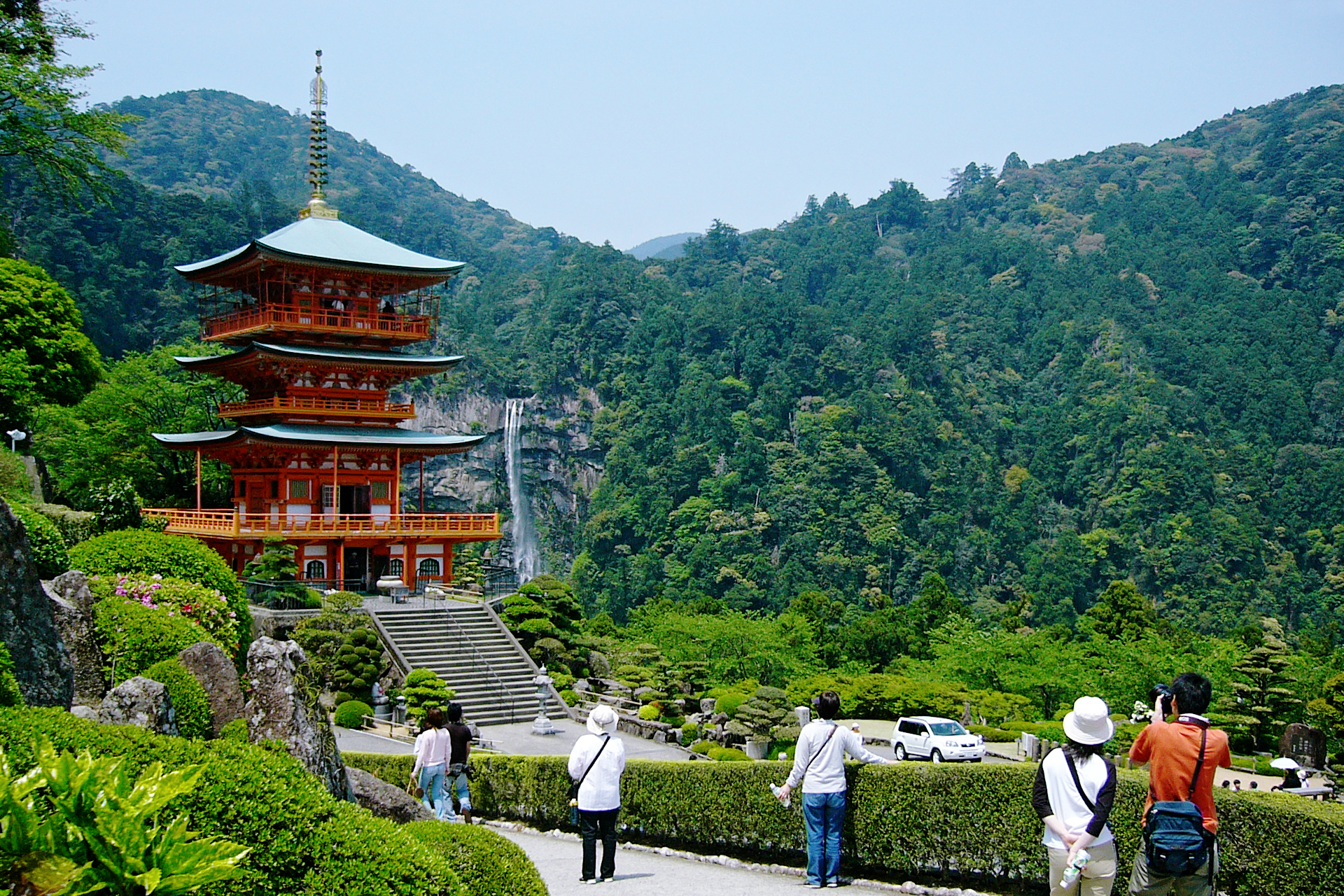 |
| Photo: Wikipedia |
Perched in front of the stunning Nachi Falls , the brilliant red three-story pagoda of Seigantoji Temple is a striking example of a man-made structure in synergy with the natural environment. The temple is also attached to Kumano Nachi Taisha Shrine , demonstrating the often harmonious relationship between Buddhism and Shintoism.
While the bold red pagoda is the image most associated with the temple, there is much more to discover. The temple is actually the oldest structure in the Kumano area and houses many important cultural properties. Visitors to the site on a specified day in February will also be lucky enough to have any wish granted by the enshrined deity—wisdom, wealth and power included.
Entrance to the site is free, however a small fee is necessary to enter the pagoda.
Quick Facts
The temple is one of the few that is joined with a shinto shrine after the forcible separations in the Meiji period
Many of the buildings were burned down by Oda Nobunaga in the 16th Century.
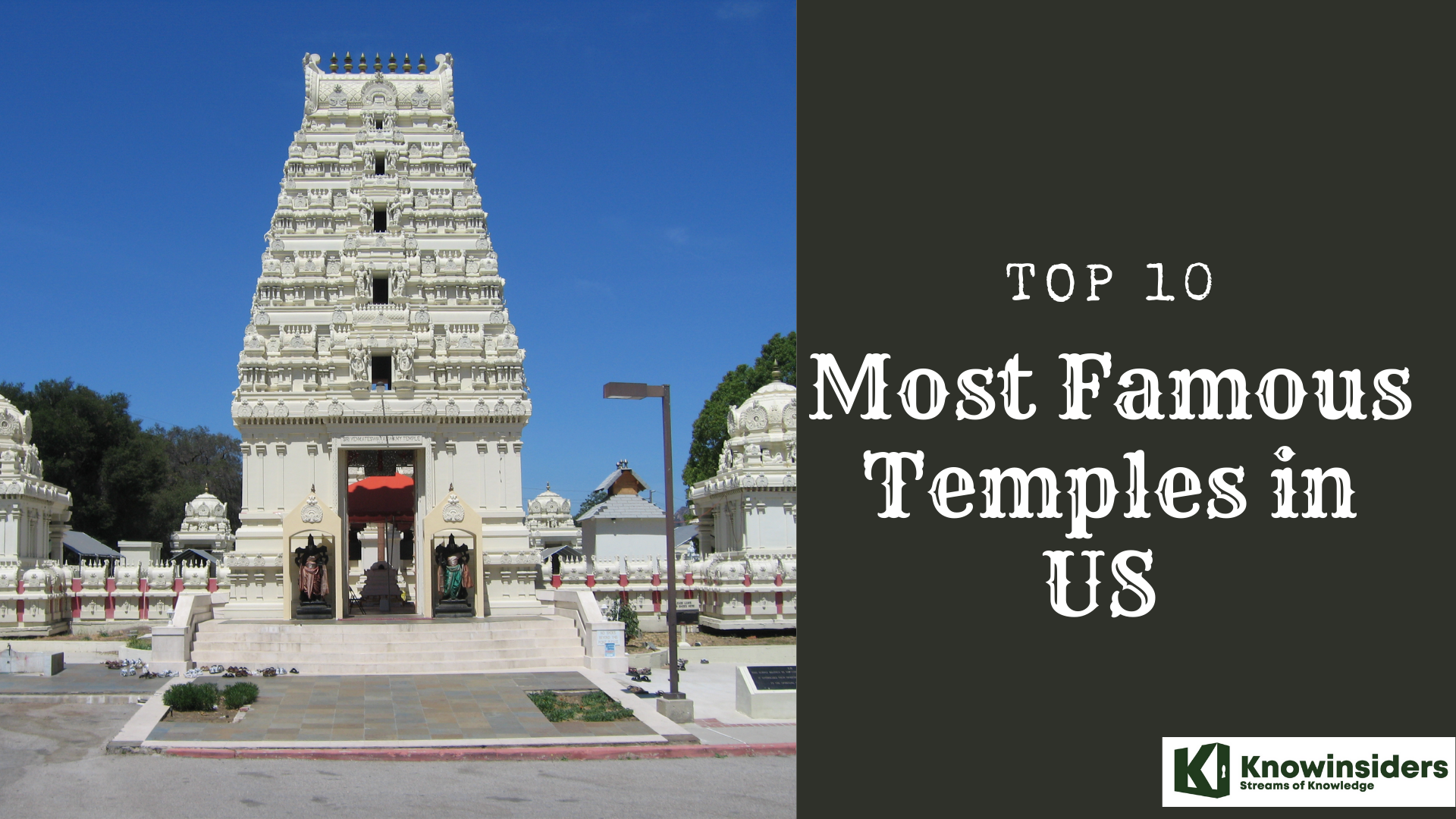 Top 10 Most Famous Temples in America Top 10 Most Famous Temples in America Since Hinduism has become one of the major religions in America, this country has been a place for many beautiful and majestic temples. Here is ... |
8. The Temple of Hephaestus in Athens, Greece
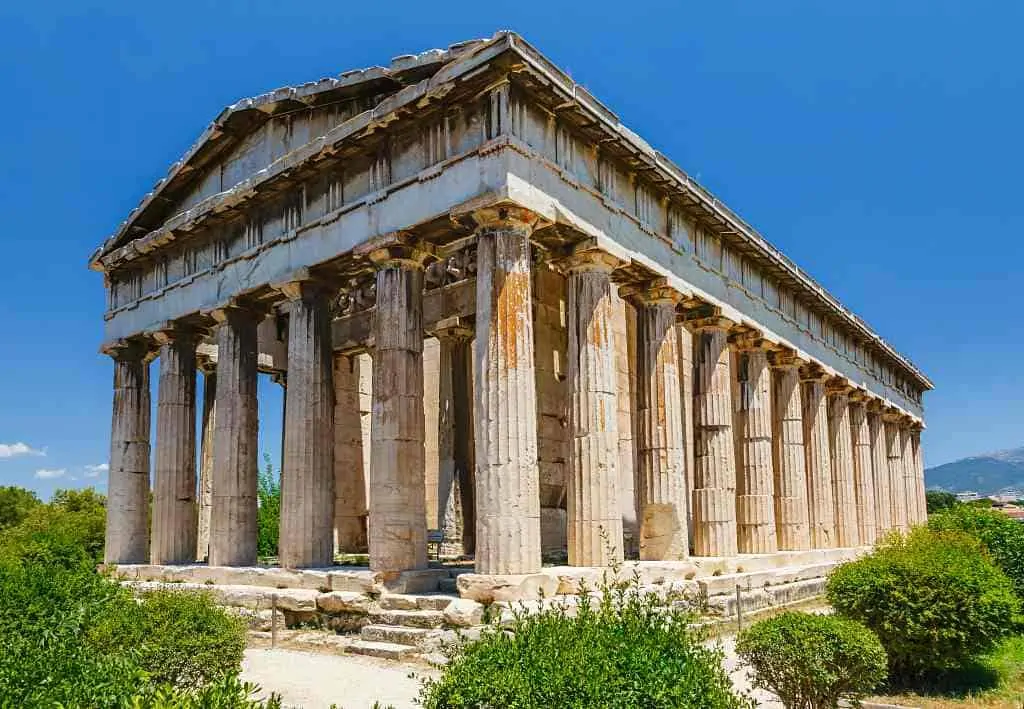 |
| Photo: Athens and Beyond |
The Temple of Hephaestus is the best preserved ancient temple in Greece. It was dedicated to Hephaestus, the ancient god of fire and Athena, goddess of pottery and crafts. According to the archeologists, the temple was built around 450 B.C. at the western edge of the city, on top of Agoreos Koronos hill, and it is a classic example of Dorian architecture. The temple was designed by Iktinus, one of the talented architects who also worked on Parthenon, However, many other craftsmen worked at this fantastic temple.
The temple has 6 columns on the short east and west sides and 13 on the north and south sides. Its friezes and other decorations have been greatly damaged by earthquakes and invasions along the centuries. The temple is located in Thissio, within a short distance from the Acropolis and Monastiraki, just above the Ancient Agora and the Stoa of Attalos. It was built from Pentelic marble, while its sculptures are made of Parian marble. It has a pronaos, a cella, and an opisthodomos. The temple is peripheral, with columns that surround the centrally enclosed cella. Both of them are decorated with friezes.
The east and west sides of the temple are shorter whereas the north and the south sides are longer. On the eastern front of the temple, there are sculptures depicting the labors of Hercules and the battle of Theseus with the Pallentides, the fifty children of Pallas. On the west side, the sculptures depict the fall of Troy.
From the 7th century A.D. till 1834, this temple was an Orthodox church dedicated to Saint George Akamatus. The last Holy Mass took place in February 1833, when King Otto arrived in Greece. In the 19th century, the temple was used as a burial place for the non-Orthodox Europeans and philhellenes. Actually, the archeological excavations revealed many graves. In 1834, King Otto ordered the building to be used as a museum where it actually remained as such until 1934. Today, this temple is one of the greatest ancient monuments in Greece. Reconstruction and excavation works are still carried out.
7. Paro Taktsang in the Paro Valley, Bhutan
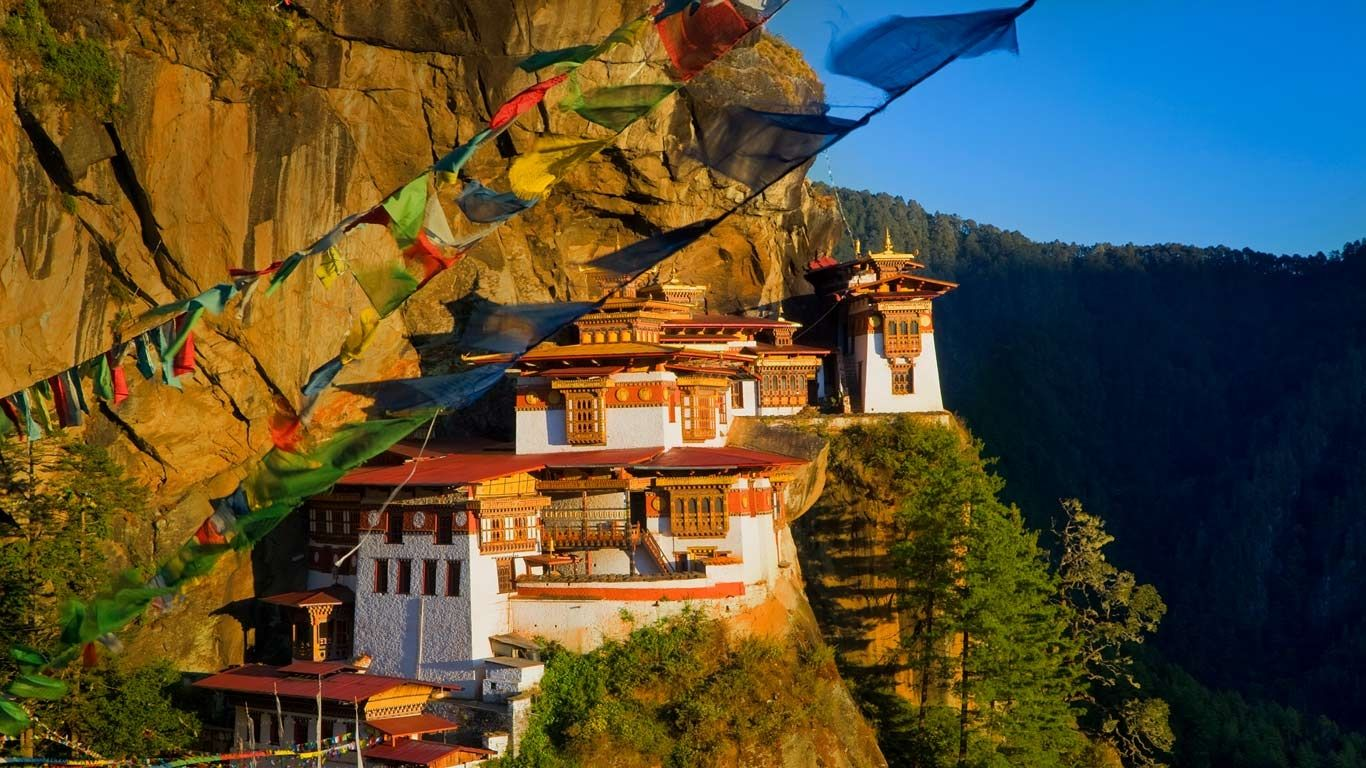 |
| Photo: Pinterest |
THIS TEMPLE COMPLEX HANGS FAR up on a cliff overlooking the Paro valley in Bhutan. It is one of 13 small monasteries, or “tiger lairs” where the Buddhist master Padmasambhava, also known as Guru Rinpoche, is said to have meditated in the 8th century.
Padmasambava, which translates as “he who came into being in a lotus,” was a Brahmin royal who spread Tantric Buddhism through Bhutan and Tibet in the 700s, and is seen in those areas as nearly as holy as the Buddha himself.
As legend has it, Padmasambava landed at Paro Taktsang to meditate when he brought Buddhism to Bhutan in the 8th century. He is said to have arrived on a flying tiger which had recently been his Tibetan concubine. He then meditated in a cave high on the mountain for four months after which he subdued the local ‘demons’ and began the conversion of the Bhutanese to Buddhism.
For those without flying tiger concubines, getting to the Tiger’s Nest is significantly more difficult. There is a two hour climb from the valley floor, which is already quite high at 7,000 feet, to the Tiger’s Nest 3,000 feet above— 10,000 feet above sea level. As one climbs the well-maintained but very steep trail over ever more vertical switchbacks, the monastery seems to appear and disappear in and out of the trees and the mists. After two hours of a long slow climb—going slow is recommended to help manage the pace of the altitude—one arrives at the only beginning of the entrance to the Tiger’s Nest, a rock outcropping overlooking a vast chasm, with the monastery on the other side.
Beneath the promontory of rock, and across the chasm from the monastery, the cliff drops a couple of thousand feet to the gorge below. Carved into the exposed cliff face are stone steps; handrails have only recently been added. This is the way to the Tiger’s Nest monastery.
Despite reservations that visitors may have about navigating the intimidating steps, it’s common to see Bhutanese locals, including mothers carrying small babies, walking up the steps with ease. The steps lead down into the gorge, which provides the separation and isolation the Tiger’s Nest has enjoyed for all these centuries.
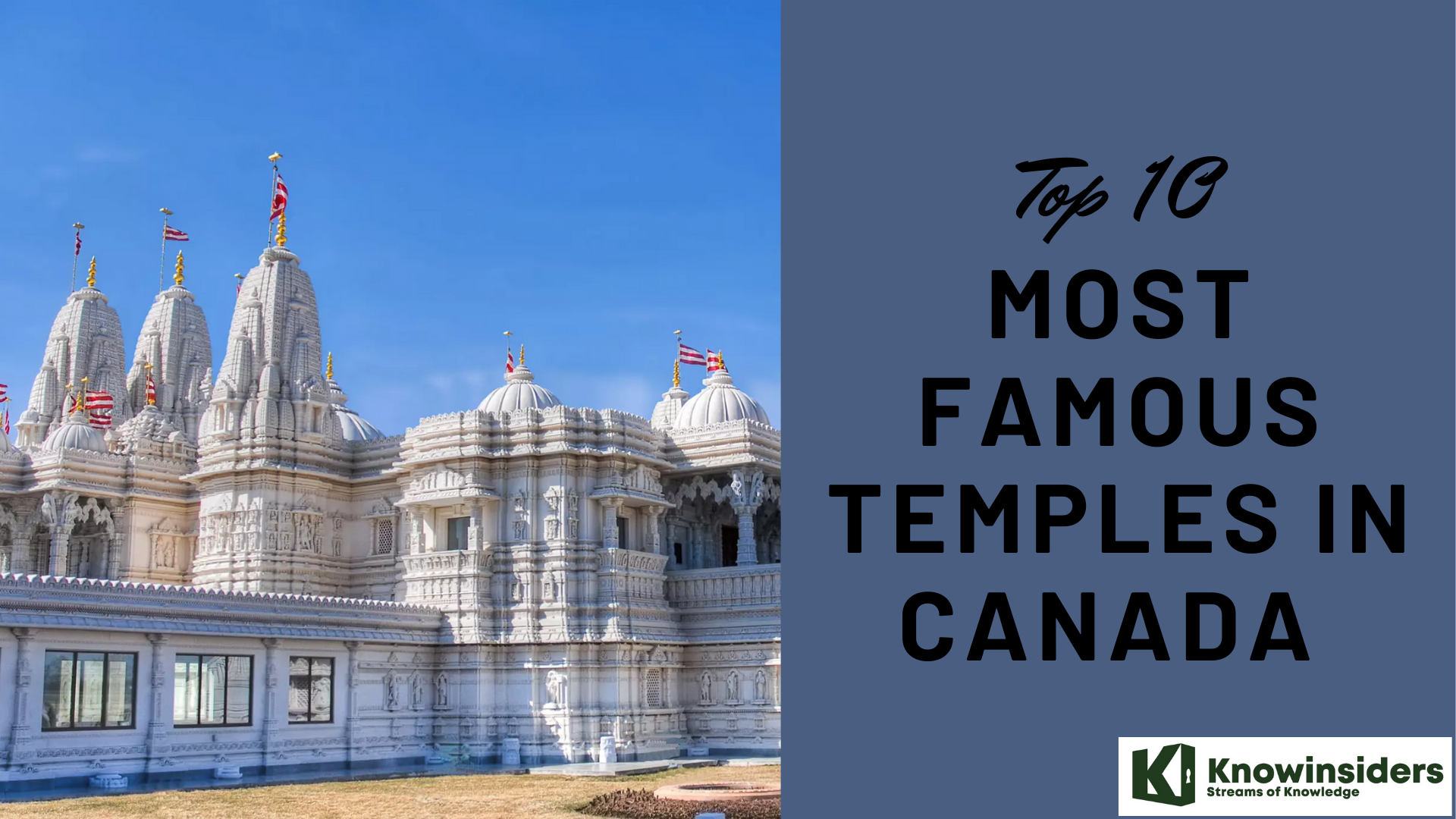 Top 10 Most Famous Temples in Canada Top 10 Most Famous Temples in Canada Let's check out this article below for top 10 most famous temples in Canada for your next religious trips in the future. |
6. Wat Benchamabophit Dusitvanaram in Bangkok, Thailand
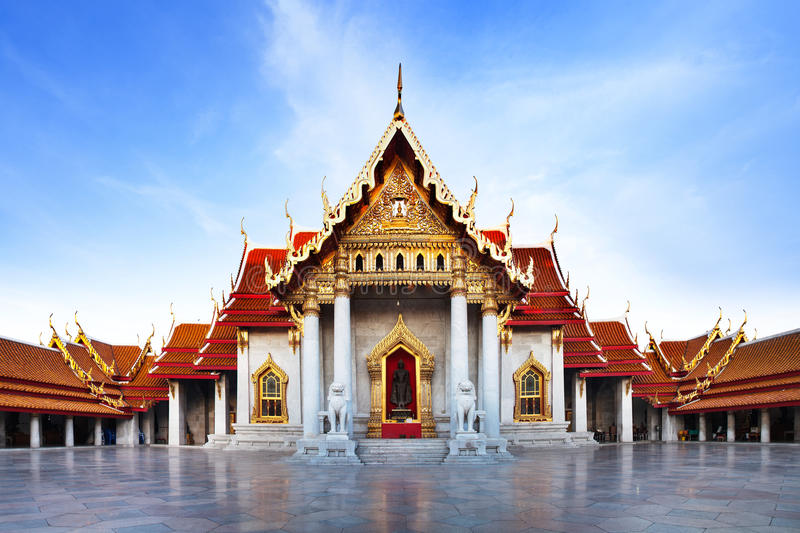 |
| Photo: Dreamstime |
Wat Benchamabophit Dusitvanaram (Thai: วัดเบญจมบพิตรดุสิตวนาราม) is a Buddhist temple (wat) in the Dusit District of Bangkok, Thailand. Also known as the marble temple, it is one of Bangkok's best-known temples and a major tourist attraction. It typifies Bangkok's ornate style of high gables, stepped-out roofs and elaborate finials.
Construction of the temple began in 1899 at the request of King Chulalongkorn after building his palace nearby. The temple's name literally means 'the Temple of the fifth King located near Dusit Palace'. It was designed by Prince Naris, a half-brother of the king, and is built of Italian marble. It has display of Carrara marble pillars, a marble courtyard and two large singhas (lions) guarding the entrance to the bot. The interiors are decorated with crossbeams of lacquer and gold, and in shallow niches in the walls of paintings of important stupas all over the country. The cloister around the assembly hall houses 52 images of Buddha.
Merit makers come to the monks of the temple for getting alms every morning. Between 06:00–07:30 in the morning, monks line up on Nakhon Pathom with their bowls to receive donations of curry, rice, lotus buds, incense, toiletries and other essentials. The evening candlelight procession around the bot during the Buddhist festivals of Magha Puja (in February) and Visakha Puja (in May) are common at this temple.
5. The Temples of Abu Simbel in Abu Simbel, Egypt
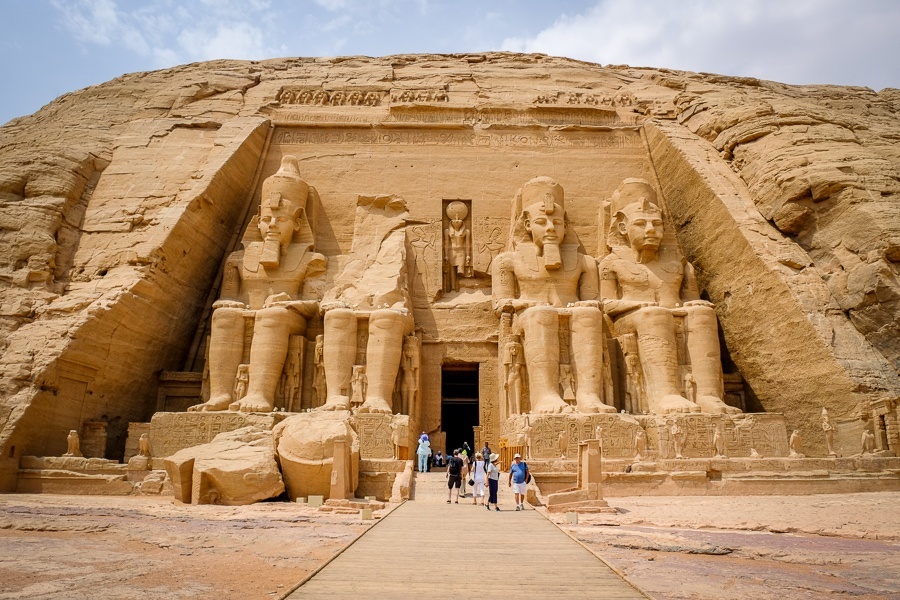 |
| Photo: TheWorldTravelGuy |
This site, Abu Simbel Temples, south of Aswan along Lake Nasser’s shore is the most famous in all of Egypt after the Giza Pyramids. Built by the greatest of the pharaohs, Ramesses II, which made it also known as the Temple of Ramses II or Ramesses II, these huge rock-cut temples marked the southern boundary of the Egyptian Empire with Nubia at the peak of its power during the New Kingdom.
They were meant to convey the power of Egypt’s rulers to anyone who laid eyes upon them. The four statues guarding the doorway to the larger of these temples are the largest sculptures that survive from the ancient Pharaonic era.
The Abu Simbel Temples are located at Abu Simbel, a small village of Aswan in Upper Egypt near the border with Sudan on the western bank of Lake Nasser.
The twin temples were built to serve as a lasting monument to the king and his queen Nefertari, and commemorate his victory at the Battle of Kadesh.
After being lost form civilization for a while, the Abu Simbel Temples was rediscovered in 1813 by Swiss explorer John Lewis Burckhardt. The temples had long been forgotten and the sands of the desert had covered all but the tops of the heads of the huge statues in front of their entrances.
Since 1909 when the sand was finally cleared away, these twin temples have become the most famous site in Egypt’s south.
4. Shwedagon Pagoda in Yangon, Myanmar
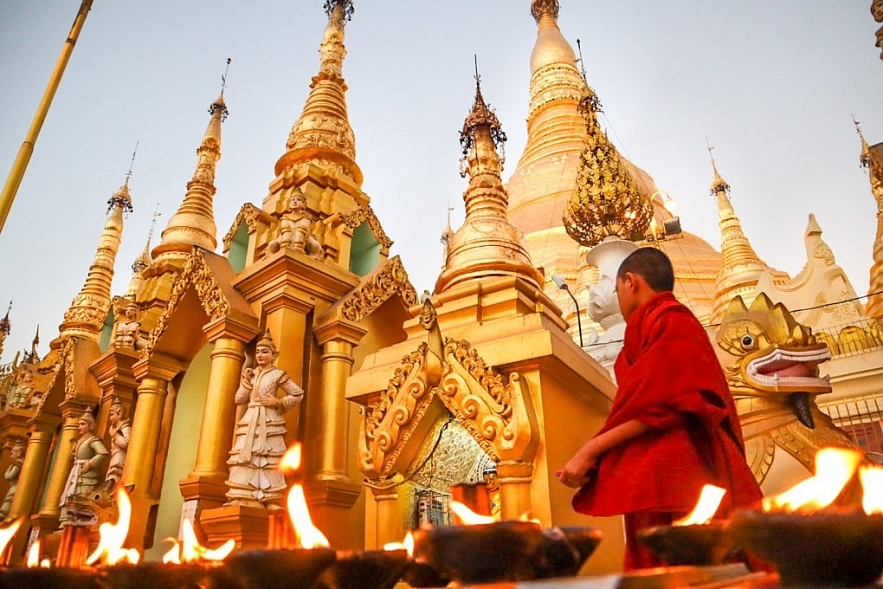 |
| Shwedagon Pagoda in Yangon |
The Shwedagon Pagoda, and also known as the Great Dagon Pagoda and the Golden Pagoda, is a gilded stupa located in Yangon, Myanmar.
The Shwedagon is the most sacred Buddhist pagoda in Myanmar, as it is believed to contain relics of the four previous Buddhas of the present kalpa. These relics include the staff of Kakusandha, the water filter of Koṇāgamana, a piece of the robe of Kassapa, and eight strands of hair from the head of Gautama.
Built on the 51-metre (167 ft) high Singuttara Hill, the 112 m (367 ft) tall pagoda stands 170 m (560 ft) above sea level, and dominates the Yangon skyline. Yangon's zoning regulations, which cap the maximum height of buildings to 127 metres (417 feet) above sea level (75% of the pagoda's sea level height), ensure the Shwedagon's prominence in the city's skyline.
The stupa's plinth is made of bricks covered with gold plates. Above the base are terraces that only monks and other males can access. Next is the bell-shaped part of the stupa. Above that is the turban, then the inverted almsbowl, inverted and upright lotus petals, the banana bud and then the umbrella crown. The crown is tipped with 5,448 diamonds and 2,317 rubies. Immediately before the diamond bud is a flag-shaped vane. The very top—the diamond bud—is tipped with a 76 carat (15 g) diamond.
The gold seen on the stupa is made of genuine gold plates, covering the brick structure and attached by traditional rivets. People all over the country, as well as successive monarchs, starting from Queen Shin Saw Pu, have donated gold to the pagoda to maintain it.
There are four entrances, each leading up a flight of steps to the platform on Singuttara Hill. A pair of giant leogryphs guards each entrance. The eastern and southern approaches have vendors selling books, good luck charms, images of the Buddha, candles, gold leaf, incense sticks, prayer flags, streamers, miniature umbrellas and flowers.
It is customary to circumnavigate Buddhist stupas in a clockwise direction. In accordance with this principle, one may begin at the eastern directional shrine, which houses a statue of Kakusandha, the first Buddha of the present kalpa. Next, at the southern directional shrine, is a statue of the second Buddha, Koṇāgamana. Next, at the western directional shrine, is that of the third Buddha, Kassapa. Finally, at the northern directional shrine, is that of the fourth Buddha, Gautama.
 Top 10 Most Famous Temples in America Top 10 Most Famous Temples in America Since Hinduism has become one of the major religions in America, this country has been a place for many beautiful and majestic temples. Here is ... |
3. The Temple of Heaven in Beijing, China
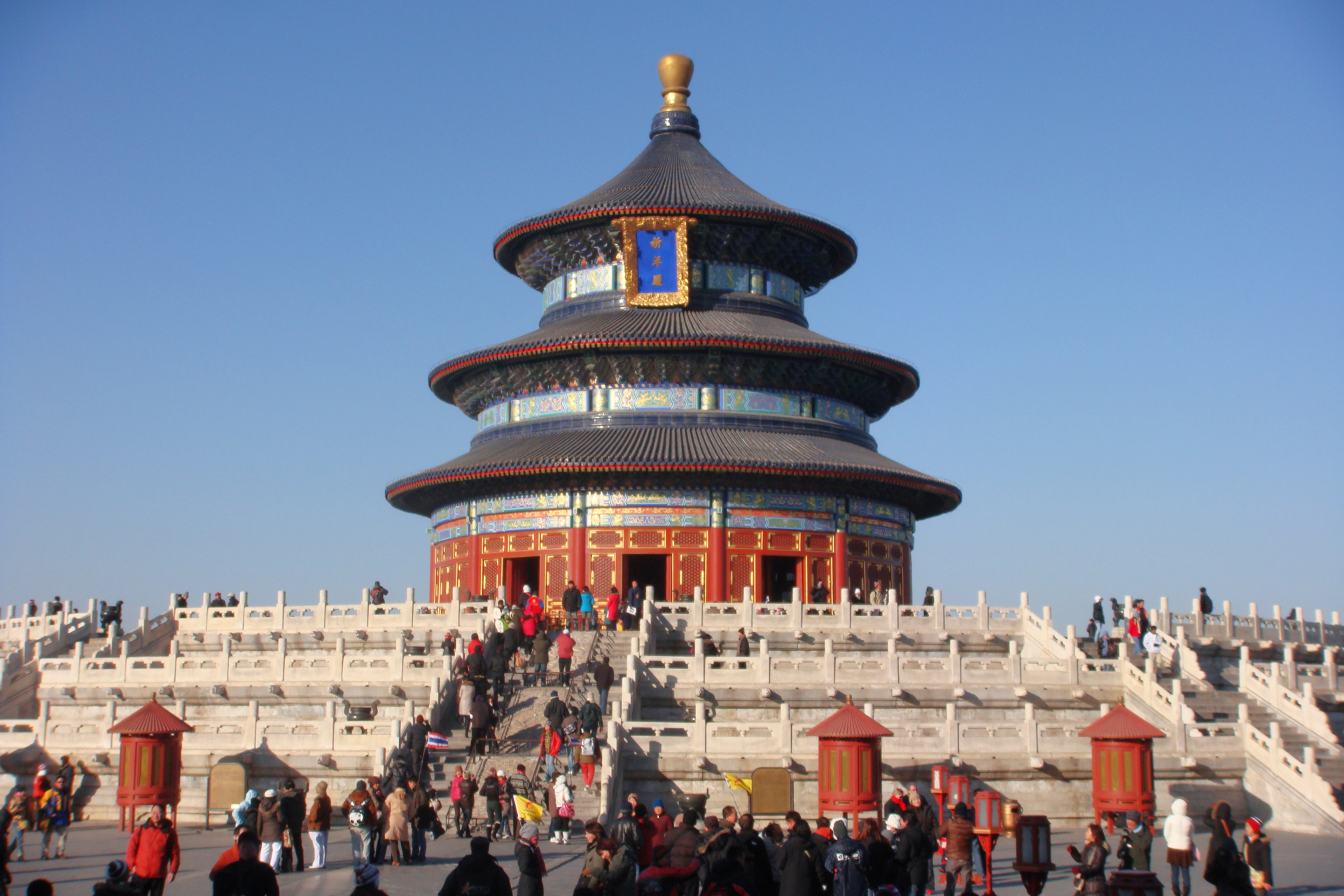 |
| Photo: Wikipedia |
As the largest of Beijing's imperial of religious building complexes, the Temple of Heaven is known for its rigorous symbolic layout, peculiar structure, and magnificent decoration. It is the most representative example of Chinese ritual architecture. Emperors of the Ming and Qing dynasties (from 1420 to 1900) worshiped the god of heaven and prayed for good harvests there.
The Temple of Heaven is located south of the Forbidden City. The total area of Temple of Heaven Park is about 2.73 km2 (1.05 sq mi). That's a similar size to Central Park in New York or twice the size of Hyde Park.
The design of the main buildings is a combination of circles and squares, which symbolize the belief that Heaven is round and Earth square.
The design of the Temple of Heaven complex, true to its sacred purpose, reflects the mystical cosmological laws believed to be central to the workings of the universe.
Both the overall arrangement and the buildings themselves reflect the perceived relationship between Heaven and Earth, the core of Chinese cosmology at that time. Much numerology, symbolizing Chinese beliefs and religion, operates within the Temple of Heaven’s design.
The most striking building of the Temple of Heaven is the tall, circular Hall of Prayer for Good Harvests, in the north of the park. In the south of the park lie the Imperial Vault of Heaven and Circular Mound Altar.
2. Wat Rong Khun in Chiang Rai, Thailand
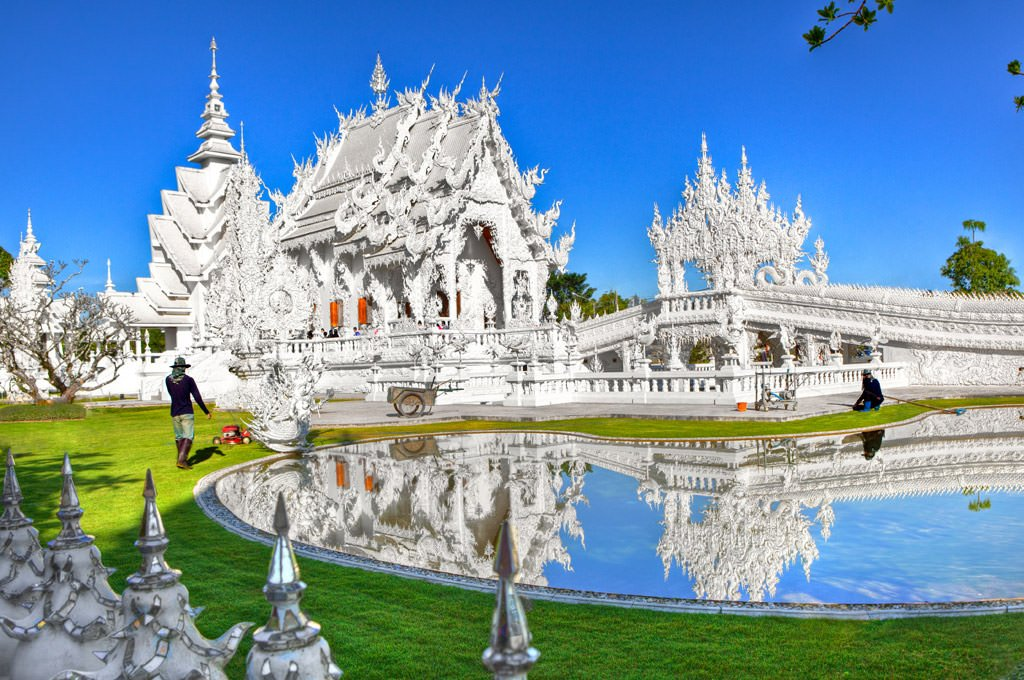 |
| Photo: BestPrice Travel |
IN A NATION OF TEMPLES, Thailand’s Wat Rong Khun stands out. Known as the White Temple, Wat Rong Khun is located in Northern Thailand near Chiang Rai.
The project of well-known Thai artist Chalermchai Kosipipat, and the temple was funded by Kosipipat’s selling of his paintings. Construction began in 1997 and was completed in 2008, although new elements are still being added.
Kosipipat wanted to create an elegant temple to honor Buddha’s purity, but the temple is distinct in both its style and symbolism. Much of the temple is dedicated to depicting samsara, the Buddhist cycle of birth and death due to delusion and fixation on the self. Thus, the temple and its grounds are surprisingly contemporary, focusing on fictional elements of our materialistic world: the predator struggling to free itself from the ground, aliens, and elaborate murals depicting Neo from The Matrix, Superman, and an angry bird flying towards the World Trade Center Towers. Photography of the murals is prohibited, but visitors can purchase reproductions at the gift shop.
Unlike most Thai temples, the building is all white, with glass and mirrors embedded into the outside to make it shine and sparkle in the sunlight. However, Kosipipat ultimately designed the White Temple to be viewed in moonlight when it appears particularly ghostly and otherworldly.
An ornately decorated gold building to the left of the temple houses a public restroom, which is often humorously referred to as the most beautiful restroom in Thailand.
The White Temple was severely damaged in a 2014 earthquake, but it has been fully restored.
1. Ranakpur Jain in Pali, India
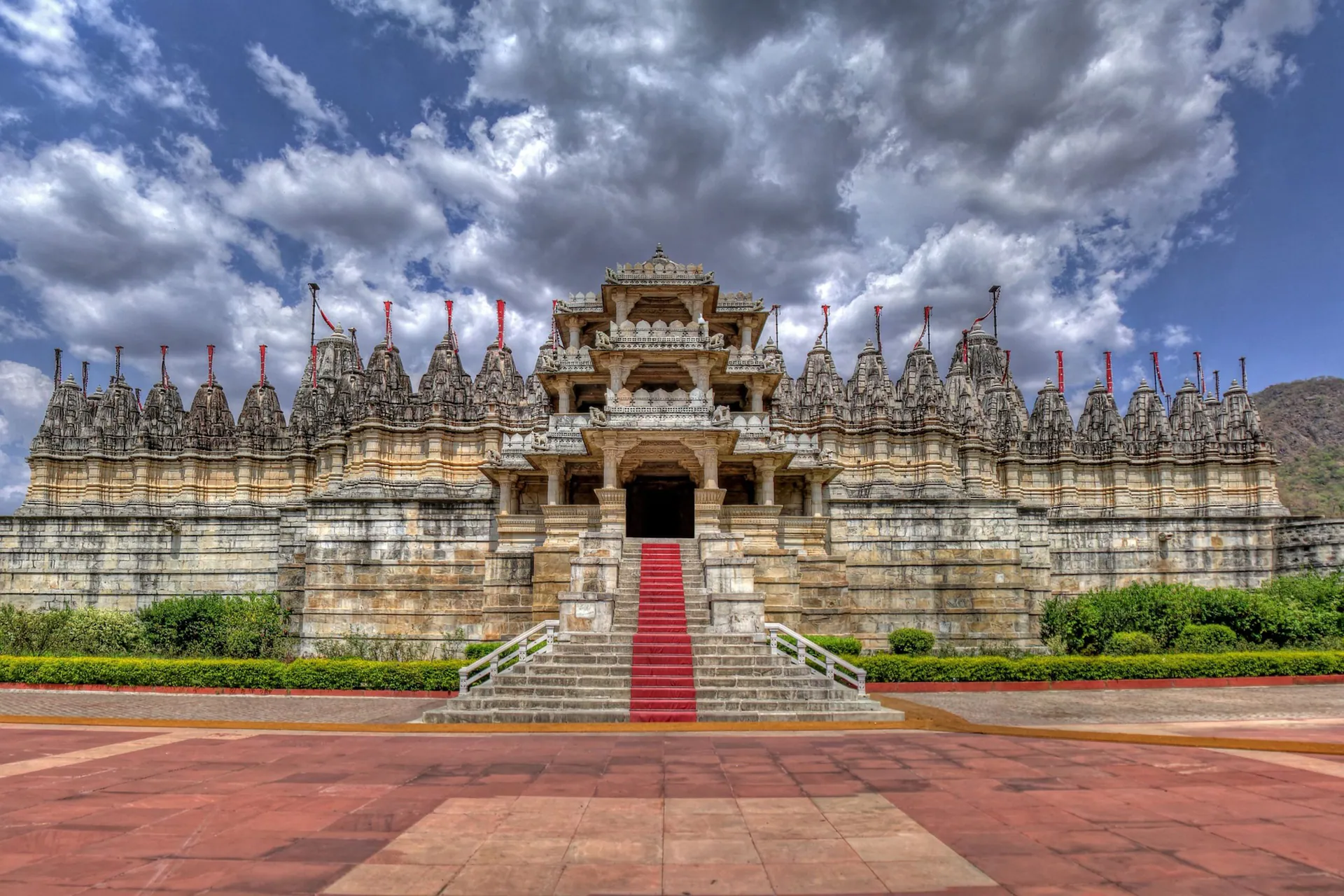 |
| Photo: Veena World |
Ranakpur Jain temple or Chaturmukha Dharana Vihara is a Śvētāmbara Jain temple at Ranakpur is dedicated to Tirthankara Rishabhanatha. The temple is located in a village of Ranakpur near Sadri town in the Pali district of Rajasthan.
Darna Shah, a local Jain businessperson, started construction of the temple in the 15th century following a divine vision. The temple honours Adinath, the first Tirthankar of the present half-cycle (avasarpiṇī) according to Jain cosmology. The Ranakpur temple is one of the largest and most important temples of Jain culture. The campus includes various temples such as Chaumukha temple, Surya temple, Suparshvanatha temple and Amba temple.
The construction is well documented in a 1436 CE copper-plate record, inscriptions in the temple and a Sanskrit text Soma-Saubhagya Kavya. Inspired by a dream of a celestial vehicle, Dharna Shah, a Porwal from Ghanerao, commenced its construction in 1389, under the patronage of Rana Kumbha, then ruler of Mewar. The architect who oversaw the project was named Dwepa. There is an inscription on a pillar near the main shrine stating that in 1439 Deepaka, an architect, constructed the temple at the direction of Dharanka, a devoted Jain. When the ground floor was completed, Acharya Soma Sundar Suri of Tapa Gaccha supervised the ceremonies, which are described in Soma-Saubhagya Kavya. The construction continued until 1458 CE. However, according to the audio guide provided to visitors to the site, construction lasted fifty years (and involved 2785 workers). Another source reports that construction continued until 1496, fifty years from 1446. The town of Ranakpur and the temple are named after the provincial ruler monarch, Rana Kumbha who supported the construction of the temple.
Rankapur along with Muchhal Mahavir, Narlai, Nadol and Varkana forms "Gorwad Panch Tirth".
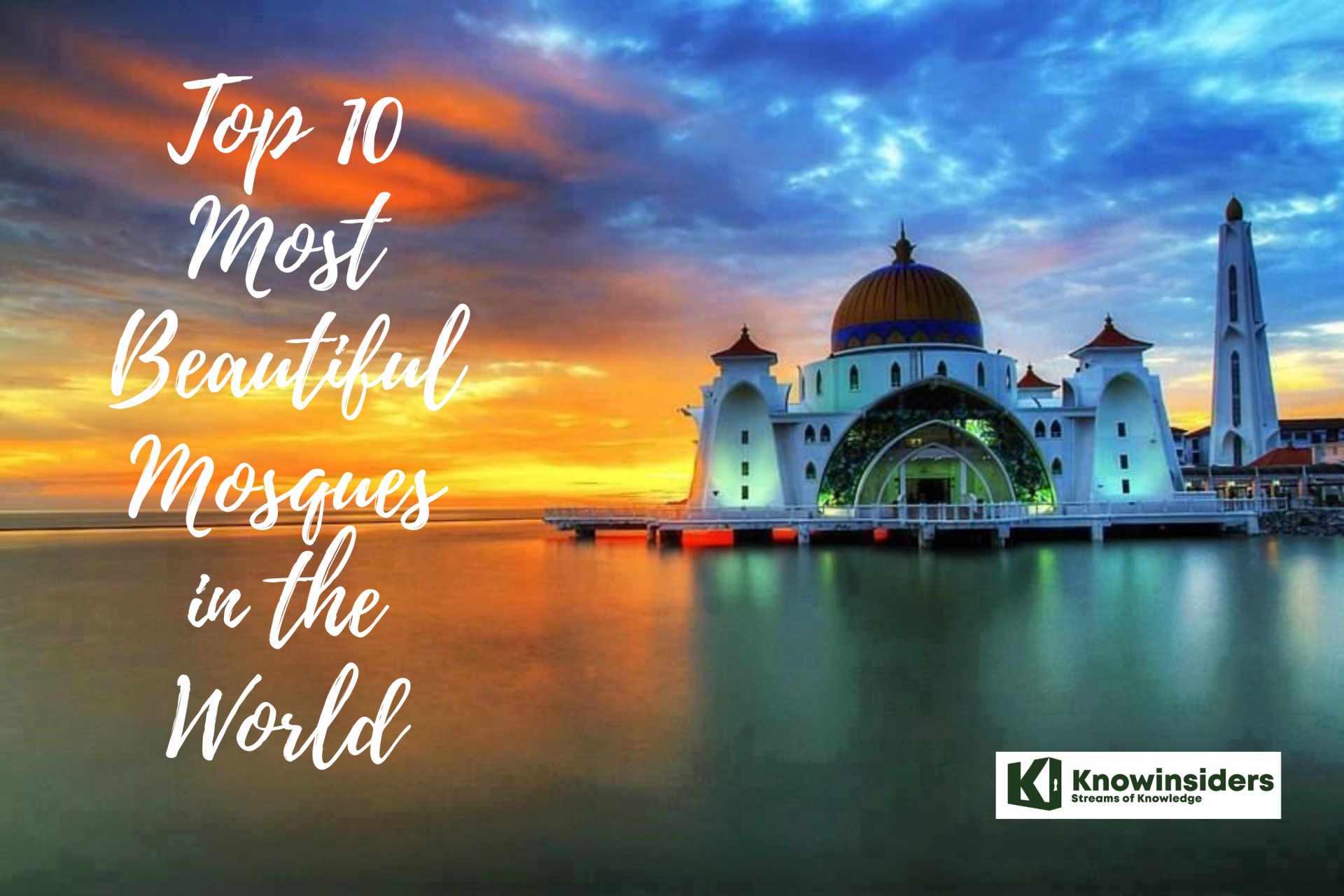 Top 10 Most Beautiful Mosques in the World Top 10 Most Beautiful Mosques in the World Mosques have existed for more than a millennium as places of worship for Muslims all around the world. Check out the 10 most beautiful mosque ... |
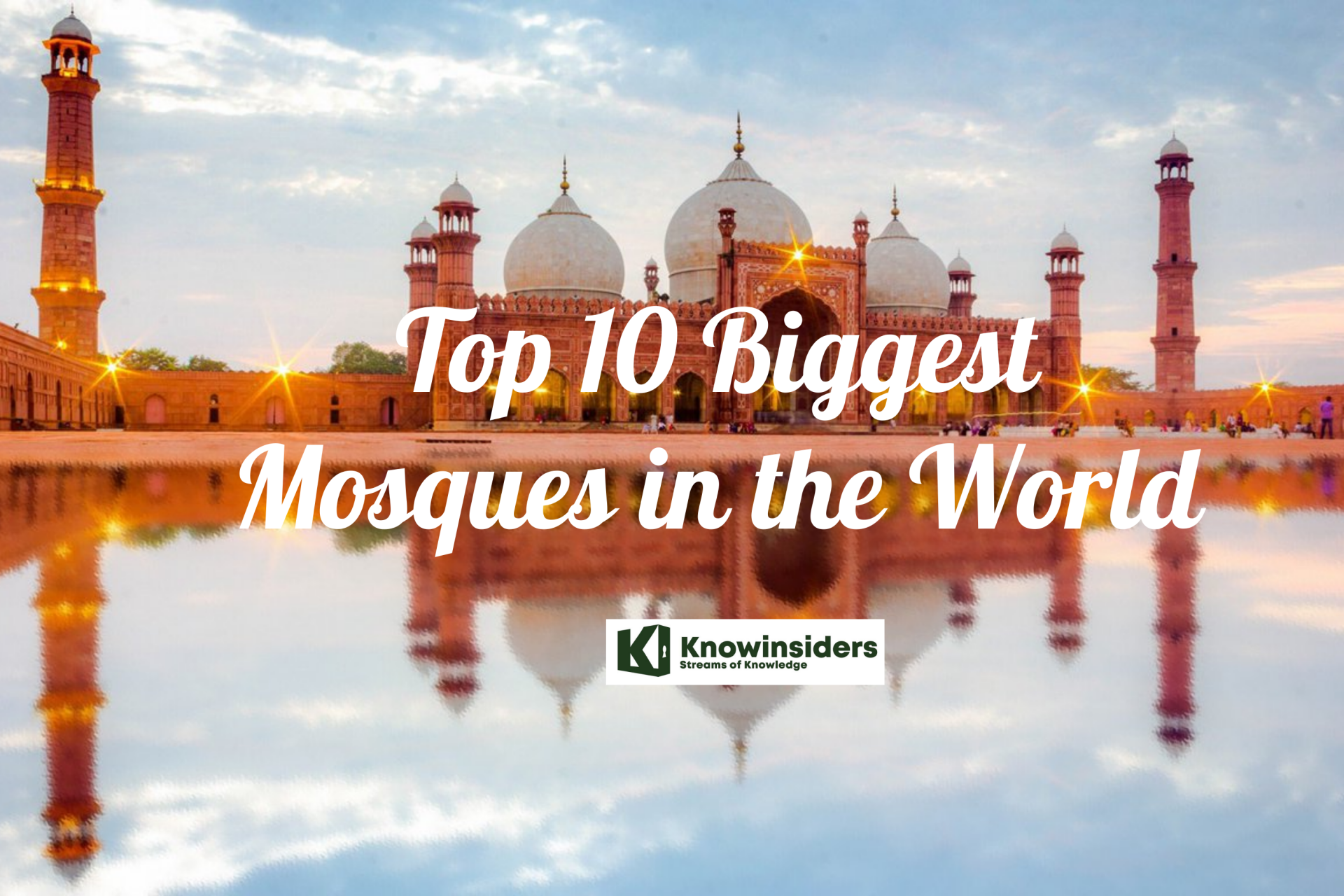 Top 10 Biggest Mosques in the World Top 10 Biggest Mosques in the World With each of the mosques possessing their own merits, mosques often make an especially powerful statement. Check out the list of 10 biggest mosques depending ... |
 Top 10 Astonishing and Beautiful Lakes in Europe Top 10 Astonishing and Beautiful Lakes in Europe Eager to know what are the most astonishing lakes in Europe? Check out the list of the 10 most beautiful lakes in Europe right below! |
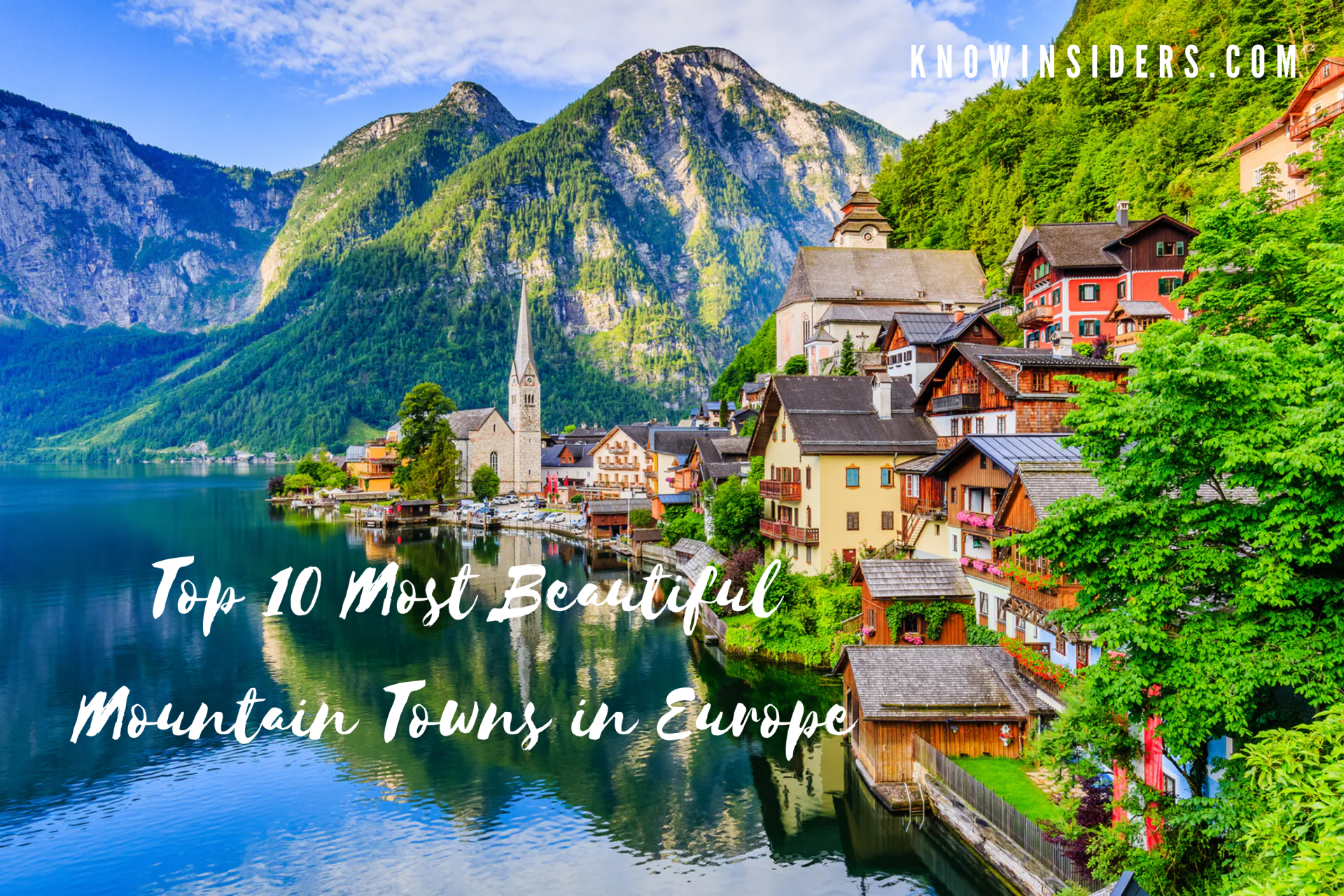 Top 10 Most Beautiful Mountain Towns in Europe Top 10 Most Beautiful Mountain Towns in Europe Being surrounded by mountains can enhance the beauty of just about any town. Check out the list of 10 most beautiful mountain town in Europe ... |


























